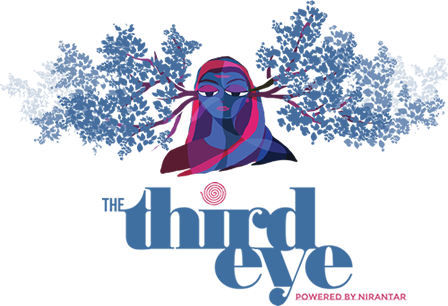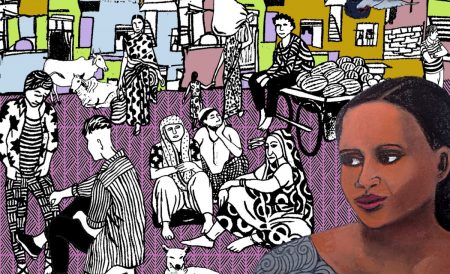This is Part III of a series on the psyche and sexuality, based on the author’s research, reflections and analysis. The series explains key psychoanalytic concepts and offers pedagogical possibilities while working on sexuality. Part I explored the feeling of bewilderment and Part II laid down the relationship between desire and lack.
When friends — or we ourselves — berate the wrong decisions we have made in love, we tend to think about the situations that psychoanalyst Bruce Fink calls the ‘pull paradigm’. The story of love has been constructed such that it has us assuming there is something about the other person that ‘pulls’ us towards them. In this ‘pull paradigm’, we assume that desirability has an important role to play in determining who we form an intimate relationship with.
We are attuned to think of love in a supremely romantic way. According to this way, the object of love has that unique quality that makes them the perfect match for us; the trait that pulls us, unstoppably, towards them. Fink questions this ‘pull paradigm’, suggesting instead that we should think about a ‘push paradigm’1, making a 180-degree turn on our lens of looking at love. By this, he means that our psyche pushes us towards the other, not because of a desirable quality of the person, but because the psyche is finding something in the person that fits its need.
Fink’s questioning of the ‘pull paradigm’ is supported by the respondents of the survey we spoke about previously. So many of them are baffled by who they find themselves in love with, precisely because the attraction is not about the desirable traits in the object of love. One of the respondents mused about how nice it would be to have a version of herself that “chooses ‘healthily’.” Perhaps clues lie behind the words themselves.
Geeta identifies as a heterosexual woman. She wrote,
#How can it be that I fell in love with someone who is so wrong for me?
To what extent do we “choose” who we fall in love with?
The idea of free choice has already been critiqued over time, in order to get us to see the influence of class, caste, gender, ability and a host of social and economic factors. Additionally, the promises of privileges and threat of punishments that come with upholding normative behaviour puncture holes into any neo-liberal notion of free choice. There are a myriad ways in which we are punished for making choices that go against norms that seek to ensure we are partnered with someone of the same caste, class, religion, opposite sex/gender et cetera: loss of social standing, being disinherited, physical violence and death are the most common. The reward, on the other hand, for following the norms, can include acceptance by family and community, access to joint benefits like insurance and taxation, and legal protection. An awareness of the possible consequences — whether reward or punishment — impact the choices that we make.
Added to this mix, is the play of psyche and its unseen pushes and pulls.
Put all of this together and you can see the limits of ideas like freewill, autonomy to choose and the paradigm of cognitive reason.
This is illustrated when Geeta says while describing the reaction of her friends to the ‘far from good-looking’ or ‘bright’ lover. She shared that “they didn’t understand what I saw in him”. However, understanding — an act of cognition — is precisely something they could not have done when the attraction doesn’t stem from what Geeta “saw” in him, which then pulled her towards him, but rather from what was within Geeta that drew her to him.
According to Jacques Lacan, this ‘something’ in the other that pushes us towards them is the lost object2 that we spoke about in Part II, where we discussed the role of lack in what we desire.
#How can it be that I’m not able to get out of this relationship even though it’s harming me?
The respondents of the survey expressed bewilderment not only about falling in love with the wrong person, the ‘entry’ issue as it were, but also about their inability to exit a relationship they knew (in their rational, cognitive mind) was all wrong for them. Despite the advice of friends, many said that they felt a helplessness about continuing in relationships that they considered to be harmful to them.
Drawing upon his work as a psychoanalyst, Bruce Fink explains this hook, writing that although a person “may initially claim to want to be relieved of his or her symptoms”, they are unwilling to let go. This is, quite simply, an essential feature of symptoms; they provide satisfaction of one kind or another, even though it may not be obvious to outside observers or even to the individual saddled with the symptoms.
“At some level, the individual enjoys his or her symptoms.”3
The bewilderment around love compels us to see the limits of rationality. The explanations shared here as to why the wrong partner is chosen or why it is difficult to leave harmful intimate relationships are such that the current frameworks of rationality have little room for them. In a world where a rational choice is the one that helps us maximise our self-interest, choosing a partner who will make us suffer in the particular way we need, hardly seems rational. And yet.
***
From the realm of love, let’s move to sex, and in particular, sexual fantasies. Here are some responses to the survey about sexual fantasies and the feelings around them.
Respondent A identified as female and said she was still trying to figure out her sexuality. She described herself as a “20-year-old girl, from a peri-urban area in Noida”. Further,
What gives this charge to a sexual fantasy? In the two simple words of Bruce Fink, “prohibition eroticises”.4
Surely, you’ve noticed that each of the fantasies described above breaks some norms around sexuality that are held important by the society the respondents belong to. The first two fantasies transgress norms of patriarchal societies, where women are barely allowed to have agency, much less sexual desires. Sex with a woman has an erotic charge for women located in a context where the norm is to have sex with men. In the next two fantasies, the queer respondents share how men carry an erotic charge for them, although they both desire and are or have been in relationships with women.
As I said, it’s possible that reading the above brought up many feelings in each of us. But one feeling that I wish to focus on is the feeling of something being ‘not OK’, not just in the fantasies listed above, but fantasies we may have had or heard other people express. It’s not that the erotic charge exists despite them being not okay, but rather that it’s precisely the touching of taboos that make it ‘not OK’ that gives the erotic charge. That is what turns us on. Our fantasies are bound to be ‘not OK’.
It might help us feel a deeper ‘Ok-ness’ about our bound-to-be-not-OK fantasies if we recognise that it is not only my individual, personal fantasies that are not ‘OK’, this is the very nature of sexual fantasies.
It is, in fact, powerful evidence that the psyche is not just an individual phenomenon, but a collective one.
In our discussion of sexual taboos, it’s worth reminding ourselves that taboos are specific to context. Kissing on a Metro train anywhere in the global North would likely be a non-event, at least for those who are of opposite sex, same race, able-bodied and the same generation, but in India even a heterosexual couple hugging in the Metro could be beaten up for it; it is quite a dangerous fantasy. Taboos, being specific to time and place, have a collective dimension and therefore so does the psychic charge of transgressing them.
Why do taboos turn us on? Psychoanalysis offers us one explanation, to understand which, let’s return to infancy. Soon after its birth, as the infant discovers the contours of its very new body, for a time the s/he is at liberty to enjoy its own and others’ bodies as it wishes. For instance, it can shit and piss at will, touch itself how it wants, and has access to the breast of the mother. Infants, according to Freud, are ‘polymorphously perverse’, and are therefore capable of experiencing sexual pleasure from all parts of the body instead of just the erogenous zones.
From infancy, entering childhood was marked with the beginning of ‘NO’, of prohibitions. No touching your pee, your shit, your genitals or your mother’s breasts. Growing up meant being confronted by many restrictions on what objects, and what parts of our own or others’ bodies we could touch and enjoy. Psychoanalyst Bruce Fink explains, “In the course of a child’s ‘education’, its parents impose many sacrifices: immediate gratification of the need to eat and excrete is withheld or punished, and autoerotic behaviour is progressively discouraged. For example, thumb-sucking, at first tolerated, is eventually discouraged or even punished; touching one’s genitals in public, while perhaps allowed in the infant, is forbidden for the schoolchild; and so on.”
When the baby’s experience of enjoyment from all parts of its body and all available objects is reined in, a fundamental loss of what Freud calls satisfaction is imposed upon us5. Fink says that since it is hard to deal with such a loss of satisfaction, we try to recoup some of it by attempting to heighten our pleasure, by crossing barriers and contravening prohibitions.6
In fact, the play of prohibition and eroticism is such that, in Fink’s words, “the stronger the prohibition, the more erotically charged the specific act prohibited becomes”. Here Fink is in the company of Marquis de Sade, who wrote: “There is nothing that can set bounds to licentiousness […] The best way of enlarging and multiplying one’s desires is to try to limit them.”7
As Colin Macabe writes in the introduction to Bataille’s book Eroticism, “For Bataille, the notion that sexual fulfillment resides in the abolition of taboos is a contradiction in terms. For the pleasures of eroticism are the pleasures of breaking a taboo […] No taboo, no desire.”8 This challenges the notion that the liberation of sexual desire entails the destruction of taboos. Without taboos there would be no sexual desire! In other words, taboos don’t kill pleasure. In fact, through their transgression, it is taboos that make pleasure possible. It is not despite but because of prohibitions that we desire.
In keeping with the counter-intuitive ulta-pulta-ness of the psychoanalysis, the succinctly expressed idea “No taboo, no desire”, speaks to realities of life within and around us. For myself, it helps make sense of my experiences as a sexuality educator. In workshops with rural women as well as with karyakartas from small towns who work with them, once inhibitions are lowered, talk of sexual desires can get pretty wild. In sharp contrast, interactions with young people from metro cities (at the risk of being ageist), particularly those in their 20’s, are marked by an aversion to sex and an ambivalence towards sexual intensity. Lower levels of prohibitions help understand lower levels of desire, which for this demographic, is apparently a global phenomenon. Having said that, “it’s complicated”.
In this inquiry into the limits of rationality, we have drawn upon two ideas from psychoanalysis — “push, not pull” and “prohibition eroticises” to grapple with questions that bewilder us in love — whether of the ‘entry’ or the ‘exit’ kind: how we enter or leave intimate relationships, and other lived contradictions. For instance, how can it be that my fantasies run contrary to my values, how can it be that despite the permission for sex, desire is on ebb, and as some of us who identify as progressive ask, how can we be so aggressive with each other despite our politics?
Lessening such bewilderment matters: Not in order to justify continuation of harmful intimate relationships, non-consensual enactment of fantasies or putting up with injustice within liberal or progressive politics. Lessening bewilderment matters because admonishing ourselves and each other for “wrong” desires, choices or behaviour has not helped beyond a point. Recognising that which is pushing us (not just what is pulling us) and the play of prohibition are key to lessen harm in our personal and political lives; that helps us to look at our own role in conflicts more keenly.
Stay tuned for Part IV of the Psyche Series.
Footnotes:
- Bruce Fink, Lacan on Love (Polity Press: Cambridge, 2015), p. 35
- Bruce Fink, Lacan on Love (Polity Press: Cambridge, 2015), p. 79
- Bruce Fink, Lacan on Love (Polity Press: Cambridge, 2015), p. 336.
- Bruce Fink, A Clinical Introduction to Lacanian Psychoanalysis: Theory and Technique (Harvard University Press: Cambridge, 1997), p. 67.
- Bruce Fink, Lacan on Love: An Exploration of Lacan Seminar VIII, Transference (Polity Press: Cambridge, 2015), 111
- Bruce Fink, A Clinical Introduction to Lacanian Psychoanalysis: Theory and Technique (Harvard University Press: Cambridge, 1997), p. 67.
- Sade, Marquis de. Les Cent Vingt Journées de Sodome. Édition établie par Jean-Jacques Pauvert, Éditions Jean-Jacques Pauvert (1953).
- George Bataille, Eroticism: Death and Sensuality, trans. Mary Dalwood (Penguin Classics, 2001).
-
Jaya Sharma is a feminist, queer, kinky activist and writer. As part of Nirantar she worked on issues of gender and education for over twenty years, during which she was intensively involved in sexuality trainings for groups working with rural women. As a queer activist she has co founded queer forums in Delhi, including the coalition Voices Against 377. She is also one of the founder members of the Kinky Collective, a group that aims to raise awareness about Bondage Domination Sado Masochism and to
strengthen the community from within. Currently her writing seeks to explore sexuality through the lens of the psyche.





